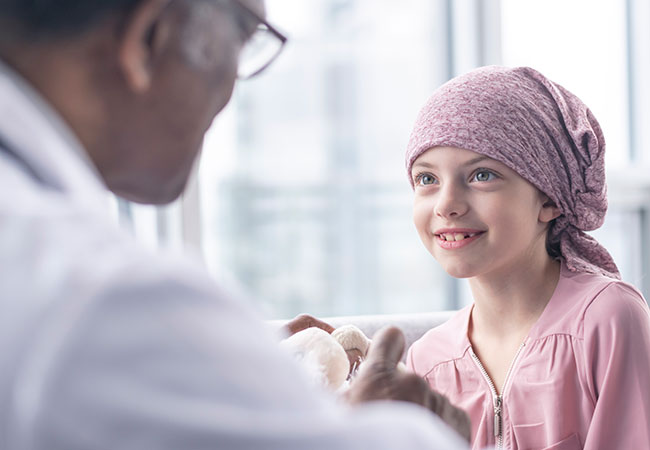
Cancer is a general term for diseases caused by the uncontrolled growth of abnormal cells. Awareness of and attention to adult cancers has grown exponentially over the past decades, but many people still don’t know much about childhood cancer. We’re committed to building awareness about this devastating disease and the terrible toll it takes on children and their families, says Dr. Vikas Dua, the Best Pediatric Hematologist in India. So let’s start with a few simple facts about childhood cancer.
The Most Common Types of Childhood Cancer
Childhood cancer is different from adult cancer. Unlike adult cancers, childhood cancers are not closely linked to lifestyle choices or environmental exposure, and there are no screening tests that enable early detection. Often, childhood cancer is not detected or diagnosed until it begins causing noticeable symptoms.
The cancers children get are different from the cancers adults get. Some childhood cancers only occur in very young children, some are more common in teens and young adults, and some never occur in adults at all. The most common types of childhood cancer are:
- Leukemia: Leukemias are cancers of the bone marrow and blood, and they make up about 25% of all childhood cancers. The two main types are acute lymphocytic leukemia (ALL) and acute myelogenous leukemia (AML), both of which grow quickly and require immediate treatment.
- Brain and central nervous system tumors: Brain tumors (and less commonly spinal cord tumors) make up about 17% of all childhood cancers. They are the most common solid tumor in children. There are a variety of different types of brain tumors, classified by where the tumor started, such as gliomas, astrocytomas and primitive neuroectodermal tumors.
- Lymphoma: Lymphoma begins in the immune system, and is likely to be found in the lymph nodes, tonsils, thymus or spleen. Hodgkin lymphoma accounts for around 6% of childhood cancers and is most common in young adults; non-Hodgkin lymphoma accounts for around 7% of childhood cancers and occurs in younger children, but is rare in children under 3. Lymphoma is generally a rapidly-growing form of cancer and requires immediate treatment.
- Neuroblastoma: Found primarily in infants and very young children, neuroblastomas constitute about 6% of childhood cancers. Although neuroblastoma can start anywhere, it is most commonly found in the abdomen.
- Wilms tumor: About 4% of childhood cancers, Wilms tumor starts in the kidney (it usually occurs in one, though in rare cases it can be found in both). It is most common in children between the ages of 3 and 4, and uncommon in children older than 6.
- Rhabdomyosarcoma: The most commonly occurring soft tissue sarcoma in children, this cancer grows in cells that develop into skeletal muscles and can be found anywhere in the body. It accounts for approximately 3% of childhood cancers.
- Bone cancers: Primary bone cancers start in the bones, and differ from metastatic bone cancer, which is a cancer that has started elsewhere but spread into the bone. Primary bone cancers make up about 5% of childhood cancers. The most common types of bone cancer in children are osteosarcoma and Ewing sarcoma.
- Retinoblastoma: This cancer starts in the eye and is most common in children under the age of 2. It is rarely found in children older than 6. It constitutes about 2% of childhood cancers.
Why Is Raising Awareness About Childhood Cancer Important?
Although still considered to be “rare” by some, the fact is that childhood cancer is the leading cause of death by disease for children under the age of 15, and it seems like most people know at least someone in their school or their town who has been personally affected by childhood cancer. And while rates of childhood cancer are increasing, research into the development of new, less toxic treatment options for childhood cancer is not keeping pace: of the more than 100 new cancer drugs approved by the FDA since 1990, only three were developed specifically to treat childhood cancer. Many forms of childhood cancer are now considered treatable, with long-term survival rates above 80 or even 90%, but some forms of childhood cancer still have extremely high mortality rates, and most childhood cancer survivors are left with long-term health problems as a result of their cancer treatment.
Childhood cancer is devastating, but you can help. Dr. Vikas Dua, the Best Pediatric Hematologist in India and his team are dedicated to raising awareness about childhood cancer, as well as providing resources and support to children and families affected by childhood cancer. Please donate so we can continue to provide our services for free.

